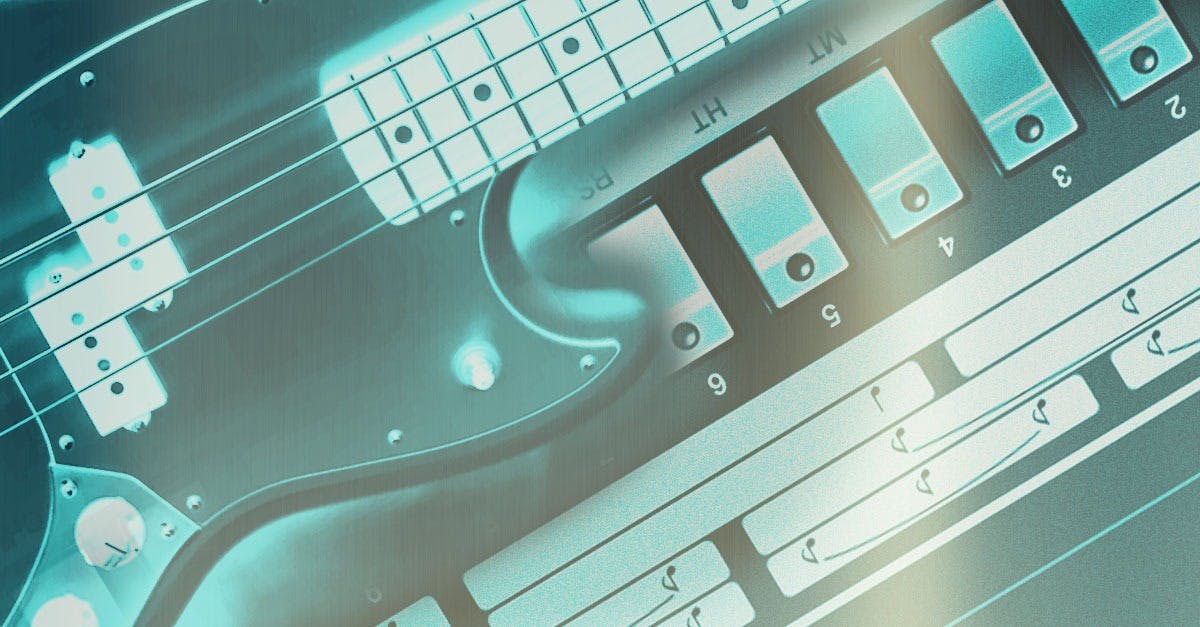Synth Bass: 7 Bass Types and How to Build Them
Synth bass is an essential sound in many different genres of music production.
From retro synth-pop to mainstage EDM, there are a handful of important styles of synth bass to know.
But programming your own bass synth sounds with plugins is difficult and time-consuming—especially if you’re just getting started with synthesis.
Even so you can make plenty of important synth bass tones if you understand how they work.
In this article I’ll go over the top 7 easy to build styles of bass synth.
Let’s get started.
1. 808 bass
The 808 bass sound is one of the most recognizable sounds in music.
It’s all over hip-hop, trap and R&B.
The sound originally came from the Roland TR-808 drum machine. It’s unique because the TR-808 is actually an analog synthesizer designed for drum sounds.
The notoriously fat kick drum voice can be warped and tuned to create the subby sound of 808 bass.
The easiest way to get the sound is to use an 808 sample pack. But any synthesizer with a sine wave oscillator can easily create an 808-type bass.
All you have to do is set a super fast attack and longer decay or release time. It helps if you’re using a nice fat sounding synth!
Here’s an easy to follow tutorial on 808 bass:
2. Reese bass
Reese bass is a popular electronic bass sound built with detuned saw waves.
It’s a thick, chorused sound with lots of depth and movement.
Reese bass is a popular electronic bass sound built with detuned saw waves.
Reese bass is another synth bass that’s easy to program with almost any subtractive synthesizer.
The basic trick is to use a synth with multiple oscillators and detune them to create the syrupy thickness of the sound.
Adding a sub oscillator and rolling off the filter cutoff completes the heavy low end sound.
Here’s an easy to follow guide to building a Reese bass:
3. Wobble bass
Wobble bass is the signature sound of dubstep and its related genres.
It’s often created using FM or wavetable synthesis for the extra distorted and metallic tone that cuts through the mix like a knife.
The wobbly character of the sound is created using aggressive modulation from an LFO or envelope connected to the synth’s filter or VCA section.
The modulation is often synced to the song’s tempo to create the rhythmic action in the sound
Some dubstep wobble basses are so aggressive that they dominate the mix and extend well into the midrange.
Some dubstep wobble basses are so aggressive that they dominate the mix and extend well into the midrange.
Here’s a few tutorials on how to make wobble basses in wavetable synthesis:
4. Octave bass
Octave bass is a retro sound that’s used in classic synth-pop, synthwave and 8bit genres.
It’s created by holding single notes with an arpeggiator set to two octaves up/down. When the arpeggiator is synced to the song’s tempo with an eight note division, the bass alternates between a low and high octave on the off-beats.
It’s a super recognizable synth bass that gives any song a foundational bass groove
You can use almost any type of bass tone with this arpeggiator setup, so it’s not limited to retro styles only.
5. Portamento bass
Sometimes you’ll hear a fat monophonic bass that glides between notes.
The gliding effect is called portamento and it gives your bass sound a unique feel and groove.
Most synth plugins have a portamento control that adjusts the time it takes for one note to glide to another.
Enable portamento and set your synth to monophonic mode to make sure only one note can sound at a time.
This ensures that each note glides into the next and doesn’t sustain past the previous one.
Adjust the portamento time as you listen to the track to sculpt the feel and groove of the slide.
6. Plucked bass
Some genres like Future Bass and Lo-fi Hip-hop need a funkier synth bass that’s not as subby as an 808.
For these basses you can use a plucked sound from a subtractive or virtual analog synth to create a warm yet punchy bass.
Creating a plucked bass is easy if you know how to use envelopes and ADSR.
The trick is to choose a fast decay time and lower sustain level to emphasize the initial attack of the notes.
If your synth has a noise oscillator you can blend that in to add even more pop to the initial attack of the sound.
Here’s a nice tutorial for the Future Bass plucked sound with subtractive synthesis:
7. FM Bass
One of the greatest things about FM synthesis is how well it sits in a mix.
One of the greatest things about FM synthesis is how well it sits in a mix.
The nice complex attacks and overtones in FM sounds mean you can use extra fat bass tones without worrying about them disappearing in a dense mix.
FM basses were an important part of the 80s and 90s sound in electronic music. From mainstream pop to house and techno, many producers used the same presets from Yamaha’s classic FM synths.
Luckily, there’s an amazing free VST synth for FM sounds called Dexed that you can use to get these exact tones in your DAW.
Here’s a tutorial on how to get the ‘Solid Bass’ FM preset that you hear on many classic tracks:
Sweet synth bass sounds
Your bass tone is one of the most important parts of your track.
That’s why it’s so important to know how to work with your bass synths to get a satisfying sound.
If you’ve made it through this article you’ll have a great start for creating any kind of classic synth bass.
Gear guides, tips, tutorials, inspiration and more—delivered weekly.
Keep up with the LANDR Blog.
